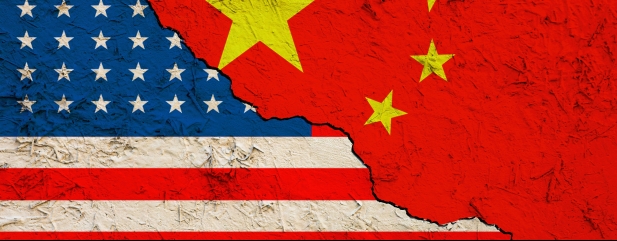Archived article
Please note that tax, investment, pension and ISA rules can change and the information and any views contained in this article may now be inaccurate.
The US could be in for an unprecedented supply shock

Wall Street may have stabilised in the last week as the White House has softened some of its rhetoric on global trade, but the real-world impact of the increase in tariffs is about to hit Main Street and could make the disruption caused by the pandemic ‘look like a tea-party’ according to some observers.
In the week from 20 April to 26 April, port cargo figures from Wabtec Corp showed 22 container ships with over 120,000 TEU (twenty-foot equivalent container units) were scheduled to dock at the Long Beach Container Terminal in Los Angeles.
For the week from 4 May to 10 May that number has dropped to 16 vessels with just 77,000 TEU, and LA port director Gene Seroka predicts arrivals are likely to drop by 35% ‘as essentially all shipments out of China for major retailers and manufacturers have ceased’.
This story is being repeated across the west coast, with Puget Sound and the port of Seattle apparently deserted with no ships, no containers and no trucks, as freight heads for Vancouver instead.
There are reports 40% of cargo ships leaving China for the US are empty, and analysts at Bloomberg now estimate ocean container bookings from China to the US could fall by as much as 60% from their normal level.
The US imports $600 billion worth of goods from China annually with a retail value of $2 trillion, and 95% of those goods arrive by sea.
Some US retailers, including Target (TGT:NYSE) and Walmart (WMT:NYSE), were able to rush-order inventory before the Trump administration imposed up to 145% tariffs on Chinese goods in April, but even they have warned the White House consumers will see empty shelves before long.
By the middle of May, thousands of US companies will need to replenish their inventories and there are fears supply shortages could lead to mass lay-offs in the trucking, logistics and retail industries.
Unfortunately, even if the US were to cut tariffs on Chinese goods to zero tomorrow, with global supply chains and container ships already in the process of being repositioned, logistics costs would go through the roof as they did in 2021/22 when the price to ship a single container from China to the US hit $20,000.
In the meantime, with the US set to remove the ‘de minimus’ exemption on low-value Chinese imports and impose a 120% tariff at the end of this week, global fast-fashion, home and beauty retailer Shein has responded by raising the price of goods to the US by up to 377%, which is likely to stoke inflation.
Important information:
These articles are provided by Shares magazine which is published by AJ Bell Media, a part of AJ Bell. Shares is not written by AJ Bell.
Shares is provided for your general information and use and is not a personal recommendation to invest. It is not intended to be relied upon by you in making or not making any investment decisions. The investments referred to in these articles will not be suitable for all investors. If in doubt please seek appropriate independent financial advice.
Investors acting on the information in these articles do so at their own risk and AJ Bell Media and its staff do not accept liability for losses suffered by investors as a result of their investment decisions.
Issue contents
Feature
Great Ideas
Investment Trusts
News
- Investors eagerly await Berkshire Hathaway's Q1 and annual meeting on 3 May
- The US could be in for an unprecedented supply shock
- Imperial Brands shares hit a five-year high as investors dial down risk
- ITV receives takeover interest from French media giant Banjay
- Associated British Foods’ first-half results send shares skidding
- Winking Studios shares nearly halve year-to-date after IPO excitement
 magazine
magazine








